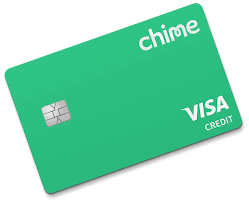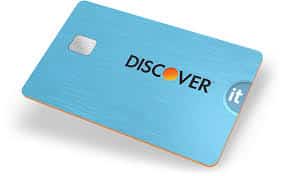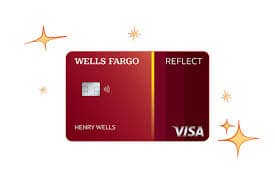Anúncios
Choose your credit card limit
A secured credit card is a special financial tool. It helps people start or improve their credit history. Users must give a cash deposit as collateral. This reduces the risk for lenders and acts as a safety net if someone can’t pay.
Anúncios
We will discuss how secured credit cards work, their pros and cons, and how to use them wisely. This information will boost your understanding of finance. It will also help you grow your credit in smart ways.

Chime Credit Builder Card
Introduction to Secured Credit Cards
A secured credit card is a unique financial product designed to help people establish or rebuild their credit history. It requires a refundable cash deposit, which acts as collateral for the issuer and serves as a safeguard if the cardholder fails to make payments. Because the deposit reduces the lender’s risk, secured cards are accessible to those with little or no credit history, or to those recovering from past credit challenges.

Discover It Cash Back
In this guide, we’ll explain exactly how secured credit cards work, outline their advantages and drawbacks, discuss how to choose the right one, and share strategies for using them responsibly. By the end, you’ll understand how these cards can be a stepping stone toward better financial health and even a transition to an unsecured credit card.

What Is a Secured Credit Card?
A secured credit card functions much like a standard (unsecured) credit card, but with one important difference: it requires a cash deposit before you can use it. The amount you deposit typically becomes your credit limit. For example, a $500 deposit would give you a $500 spending limit.

Wells Fargo Reflect Credit Card
Because the deposit protects the lender from loss, secured cards are available to borrowers who might not qualify for unsecured cards due to low credit scores or limited credit history. This makes them a valuable starting point for building a positive credit profile.
How Secured Credit Cards Differ From Unsecured Cards
The primary difference between the two lies in the approval requirements and collateral.
- Secured cards require a deposit and are easier to obtain if your credit is less than perfect.
- Unsecured cards do not require a deposit but typically demand a stronger credit history and may offer higher limits and rewards from the outset.
While unsecured cards can provide more purchasing power immediately, secured cards give you the chance to prove you can handle credit responsibly before accessing larger credit lines.
How a Secured Credit Card Works
When you open a secured credit card, you’ll pay a deposit — often between $200 and $2,500 — which the issuer holds as security. This deposit generally matches your credit limit. You then use the card just like any other credit card: making purchases, receiving a monthly statement, and repaying what you owe.
If you fail to pay, the issuer can use the deposit to cover the debt. On the other hand, if you manage the card responsibly and eventually close the account or upgrade to an unsecured card, your deposit is returned.
The application process is straightforward. You’ll provide personal and financial information, including proof of income. While issuers may review your credit history, approval is primarily based on your ability to provide the deposit, making secured cards far more accessible to high-risk borrowers.
Benefits of Secured Credit Cards
One of the biggest advantages is the ability to build or rebuild credit. When you make on-time payments, the issuer reports your activity to the major credit bureaus — Experian, Equifax, and TransUnion. Over time, these positive entries can improve your credit score.
Secured cards are also more accessible for applicants who may have been denied for other credit products. They have less strict approval requirements, giving people with poor or limited credit a second chance to demonstrate financial responsibility.
In addition, secured cards can serve as a financial learning tool, helping new users get comfortable with credit management without the risk of a large limit.
Drawbacks of Secured Credit Cards
Despite their benefits, secured cards have potential downsides. They often come with higher interest rates than unsecured cards, meaning carrying a balance can quickly become costly. Some may charge annual fees or additional service fees, which reduce the card’s overall value.
Another limitation is the low credit limit. Since your limit is tied to your deposit, you may not have enough available credit for larger purchases. This can also affect your credit utilization ratio if you use a significant portion of your limit.
Choosing Between Secured and Unsecured Cards
The choice between a secured and unsecured card depends on your credit profile and financial goals. If you have good credit, an unsecured card may be the better option for rewards and higher limits. If you’re starting from scratch or repairing past mistakes, a secured card offers a practical path toward qualification for unsecured products in the future.
Both types can eventually lead to higher credit limits if you demonstrate responsible use, but unsecured cards tend to offer more flexibility right away.
How to Select the Right Secured Credit Card
When comparing secured credit cards, pay close attention to key features:
- Annual fees — Some cards have none, while others may charge $25–$50 or more.
- Interest rates — High APRs can make carrying a balance expensive.
- Deposit requirements — Minimum deposits vary; choose one that fits your budget.
- Credit reporting — Make sure the issuer reports to all three major bureaus.
- Extra benefits — Rewards programs, cashback offers, or free credit score tracking can add value.
Reading the fine print on fees and terms will help you avoid surprises and ensure the card aligns with your needs.
Using a Secured Credit Card Responsibly
Responsible use is the key to getting the most from a secured card. Always pay your bill on time, as payment history is the largest factor in your credit score. Late payments can undo the progress you’ve made.
Keep your credit utilization low — ideally under 30% of your limit. For example, if you have a $500 limit, aim to carry no more than $150 at any time. Paying off the balance in full each month not only helps your credit score but also avoids interest charges.
Monitoring your spending and reviewing monthly statements ensures accuracy and keeps you aware of your habits.
Improving Your Credit Score With a Secured Card
Over time, consistent on-time payments and low utilization will increase your credit score. The benefits of this improvement include better chances of loan approval, access to lower interest rates, and eligibility for higher-reward credit cards.
Once you’ve established a solid payment history, you may be eligible to upgrade to an unsecured card — either with your current issuer or through a new application. At that point, your deposit will be refunded, and you’ll enjoy the benefits of higher credit limits and potentially more robust rewards programs.
Real-Life Example: The Discover it® Secured Card
The Discover it® Secured Card is a well-regarded option for building credit. It requires a refundable deposit, offers no annual fee, and provides cashback rewards — 2% at gas stations and restaurants (on up to $1,000 in combined purchases each quarter) and 1% on all other purchases. It also offers free FICO® Score access and reviews accounts after eight months to consider an upgrade to an unsecured version.
Closing a Secured Credit Card
If you decide to close your secured card, pay off any remaining balance and ensure all transactions have cleared. Contact your issuer to initiate the closure, follow their instructions, and confirm when you’ll receive your deposit refund. After closure, check your credit report to verify that the account is marked accurately.
Transitioning From Secured to Unsecured
Moving to an unsecured card is a natural goal after using a secured card responsibly for 6–12 months. Signs that you may be ready include a higher credit score, consistent on-time payments, low utilization, and overall healthy financial habits. When you apply for an unsecured card, choose one that fits your spending style and offers benefits that match your goals.
Conclusion
Secured credit cards can be a valuable stepping stone toward financial stability. They offer an accessible way to build or repair credit while teaching the habits needed for long-term success. While they may come with higher fees or lower limits, their ability to report positive payment history to credit bureaus makes them a powerful credit-building tool.
By choosing the right secured card, using it responsibly, and maintaining good financial habits, you can improve your credit score and eventually qualify for more competitive unsecured credit products. This progression opens the door to greater purchasing power, better interest rates, and more robust rewards — all of which can support your long-term financial goals.
FAQ
What is a secured credit card?
It’s a credit card backed by a refundable cash deposit that becomes your credit limit, reducing the lender’s risk.
Who should get one?
People with little, no, or damaged credit who want to build a positive credit history.
How does the application process work?
You provide personal and financial information, along with the required deposit. Your credit may be checked, but the deposit is the key factor for approval.
What are the main benefits?
They help build or rebuild credit and are more accessible to high-risk borrowers. Some also offer rewards and other perks.
What are the drawbacks?
Possible high fees and interest rates, plus low starting credit limits.
How are they different from unsecured cards?
Secured cards require a deposit; unsecured cards do not and rely on your credit history for approval.
How should I use one responsibly?
Pay on time, keep balances low, and monitor spending to maintain good credit habits.
How does it improve my credit score?
By reporting timely payments and low utilization to the credit bureaus.
Can I close my account anytime?
Yes, as long as your balance is paid in full and the issuer’s closure process is followed. Your deposit will be refunded.
How do I transition to an unsecured card?
Demonstrate consistent, responsible use for several months, then apply for or request an upgrade from your issuer.



